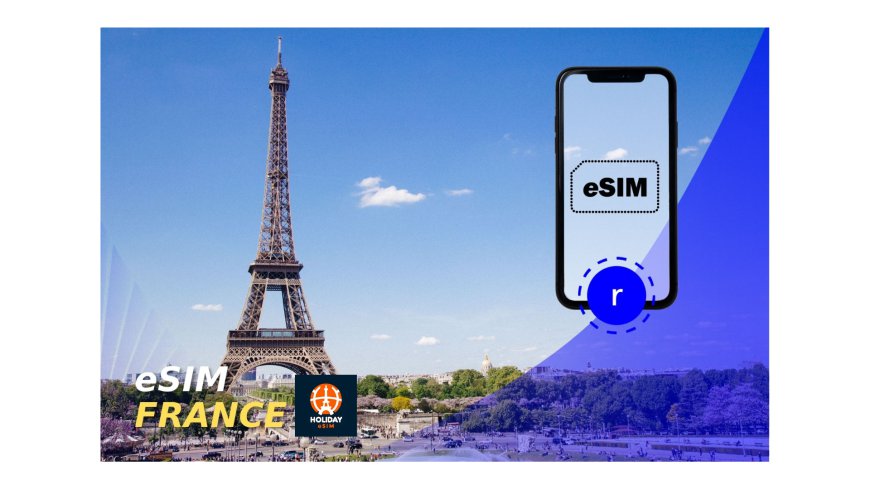Exploring Europe’s Hidden Gems with eSIM: Stay Connected Off the Beaten Path
This article explains in detail the full concept of exploring Europe's hidden gems with esim

Europe is renowned for its iconic landmarks and bustling cities, but some of its most memorable experiences are found in its lesser-known destinations. Whether you're wandering through a quaint village in the Alps or exploring the picturesque coastline of the Mediterranean, staying connected in these remote locations can be a challenge. This is where eSIM technology comes into play. In this article, we’ll explore how using the best eSIM for Europe can enhance your adventure off the beaten path, ensuring you stay connected and make the most of your journey.
The Appeal of Europe’s Hidden Gems
Europe's hidden gems offer travelers a chance to escape the crowds and experience authentic local culture. From the medieval charm of Český Krumlov in the Czech Republic to the serene beauty of the Faroe Islands, these destinations provide a unique and enriching travel experience. However, venturing into these less-traveled areas often means dealing with limited connectivity, which can be a challenge for modern travelers who rely on their smartphones for navigation, communication, and capturing memories.
Why eSIM is Ideal for Exploring Remote European Destinations
1. Seamless Connectivity in Remote Areas Traditional SIM cards often struggle with coverage in remote areas. eSIM technology, on the other hand, can provide more reliable connectivity thanks to its ability to switch between multiple carriers and access local networks. This is particularly useful when exploring hidden gems where network coverage might be patchy or inconsistent.
2. Flexibility and Convenience With an eSIM, you can easily switch between different data plans and carriers without needing to swap physical SIM cards. This flexibility allows you to adapt your connectivity based on your location, whether you're in a bustling city or a quiet village. You can activate a plan that offers the best coverage for your current area, ensuring you remain connected throughout your journey.
3. Cost-Effective Solutions eSIM plans often come with competitive pricing and flexible options, allowing you to choose a plan that fits your needs without overspending. This is especially beneficial when traveling to remote areas where traditional roaming charges could become prohibitively expensive.
How to Choose the Best eSIM for Europe
When selecting the best eSIM for Europe, consider the following factors to ensure it meets your needs:
1. Coverage and Network Quality Look for an eSIM provider that offers extensive coverage across Europe, including remote and rural areas. Providers with partnerships with multiple local networks can offer better connectivity in less-visited destinations.
2. Data Allowance and Flexibility Choose an eSIM plan with a data allowance that suits your usage needs. If you're planning to stream videos, use maps, or share content frequently, opt for a plan with higher data limits. Additionally, check if the plan allows for easy top-ups or adjustments as your travel plans evolve.
3. Customer Support and Ease of Use Select a provider known for reliable customer support and easy setup processes. A user-friendly app for managing your eSIM, checking data usage, and switching plans can enhance your overall experience.
4. Pricing Compare the pricing of various eSIM plans to find one that offers good value for money. Consider both the initial cost and any potential additional charges for exceeding data limits or extending your plan.
Tips for Using eSIM in Europe’s Hidden Gems
1. Pre-Purchase and Set Up Purchase and set up your eSIM before your trip to avoid any connectivity issues upon arrival. This allows you to start using your data as soon as you land, even if you're traveling to a remote location.
2. Check Coverage Maps Before venturing into less-traveled areas, review coverage maps provided by your eSIM provider to ensure you’ll have connectivity. Some providers offer coverage maps that show the strength of signal in various regions.
3. Use Offline Maps and Apps While eSIM provides valuable connectivity, it’s always a good idea to download offline maps and essential apps. This ensures you can navigate and access important information even if you temporarily lose signal.
4. Monitor Your Data Usage Keep an eye on your data usage to avoid unexpected charges or running out of data. Many eSIM providers offer apps or online portals where you can track your usage in real time.
5. Local Wi-Fi Utilize local Wi-Fi networks when available to conserve your data allowance. Many hidden gems have cafes, restaurants, and accommodations offering free Wi-Fi.
Conclusion
Exploring Europe's hidden gems offers a unique and enriching travel experience, but staying connected in remote areas can be challenging. By choosing the best eSIM for Europe, you can ensure reliable connectivity, flexibility, and cost-effectiveness throughout your adventure. With the convenience of eSIM technology, you’ll be able to navigate, communicate, and share your experiences without missing a beat, no matter how off the beaten path your travels take you. So pack your bags, activate your eSIM, and get ready to discover the lesser-known treasures of Europe with confidence.

 holiday__eSim
holiday__eSim